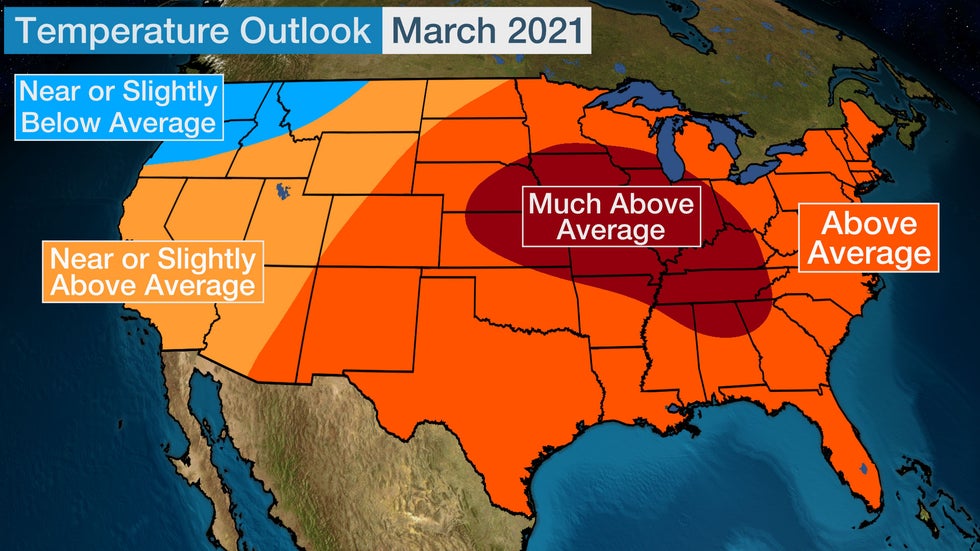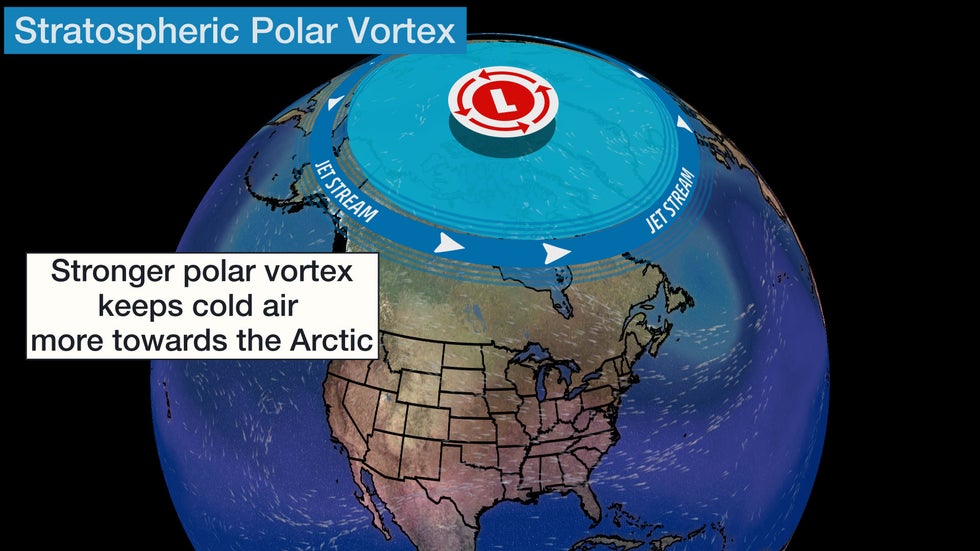weather.com meteorologists
March temperatures are expected to be warmer than average over much of the Lower 48 states, a stark change from a record cold stretch in February.
Above-average temperatures are most likely from parts of the central Plains into the Ohio and Tennessee valleys in March, according to the latest update from The Weather Company, an IBM Business.
A milder-than-average March is expected over much of the eastern two-thirds of the nation, while a chillier-than-usual March is forecast only for parts of the Northwest and northern Rockies.
(MORE: When to Expect Spring's First 70s and 80s Where You Live)

The Polar Vortex Is Strong Again
It may sound counterintuitive, but one reason for the milder March is a stronger polar vortex.
The polar vortex is a whirling cone of low pressure over the poles that's strongest in the winter months due to the increased temperature contrast between the polar regions and the mid-latitudes, such as the United States and Europe.
This isn't like a storm you might think of in the lower atmosphere, with cold and warm fronts producing rain or snow. Instead, the polar vortex occurs primarily in the stratosphere, a layer of the atmosphere about 6 to 30 miles above the ground – above most of the weather with which you're familiar occurs.
As we head toward March, the polar vortex is strong once again.
When it's strong, persistent cold air is less likely to plunge deep into North America or Europe. One way to conceptualize this is to picture the strong polar vortex acting to fence off the coldest air from the U.S. and Europe.

This strong polar vortex was in place much of last winter, which was the sixth-warmest December-through-February period on record in the U.S., according to NOAA.
Earlier this winter, it was a much different story.
As 2020 gave way to 2021, a sudden stratospheric warming (SSW) event originating over Siberia sent temperatures rocketing 50 degrees Celsius warmer over the North Pole stratosphere in just a few days.
This sudden warming weakened, stretched and displaced the polar vortex off the North Pole, and this stratospheric warmth dripped down to develop blocking patterns in the jet stream – such as the Greenland block – that opened the floodgates for much colder air into Europe and the U.S., particularly in February.
"The post-SSW 'snapback' and consolidation and strengthening of the polar vortex should provide a background state conducive for milder temperatures, especially in the eastern half of the country," said Todd Crawford, chief meteorologist with The Weather Company, regarding the March outlook.
Crawford alluded to a similar March after an SSW event – in 2004 – that was also warmer than average over much of the Lower 48 states.
But there are some colder risks to this outlook.
A pair of cold fronts could keep parts of the East chillier than average early in the month.
Crawford also noted an atmospheric sloshing known as the Madden-Julian Oscillation could keep parts of the South a bit cooler early in the month.
Otherwise, the general pattern in March could resemble what is seen in a typical La Niña – namely, colder in the Northwest and generally warmer elsewhere in the U.S.
The Weather Company’s primary journalistic mission is to report on breaking weather news, the environment and the importance of science to our lives. This story does not necessarily represent the position of our parent company, IBM.
The Weather Company’s primary journalistic mission is to report on breaking weather news, the environment and the importance of science to our lives. This story does not necessarily represent the position of our parent company, IBM.

No comments:
Post a Comment